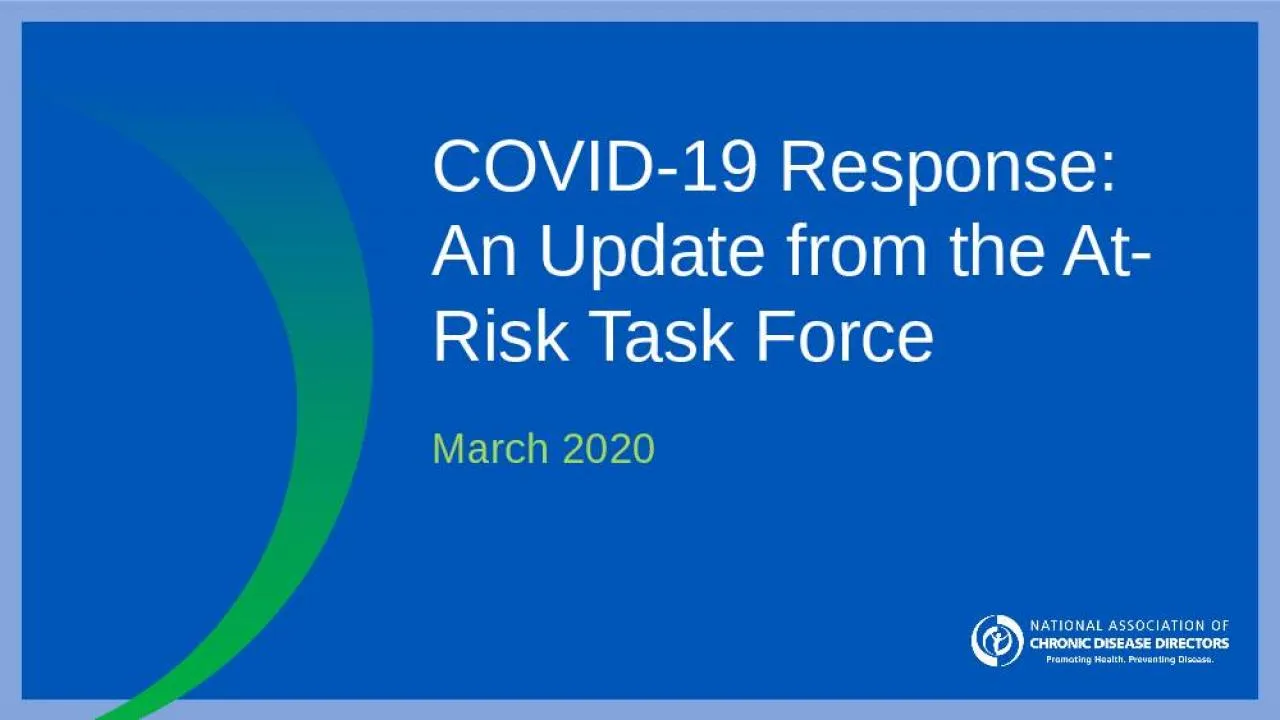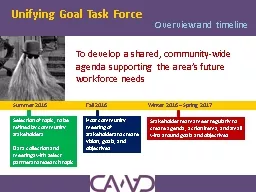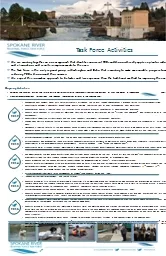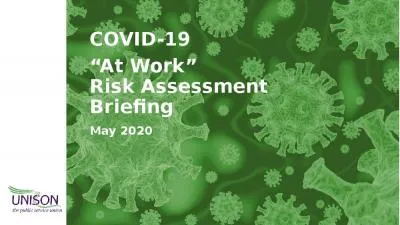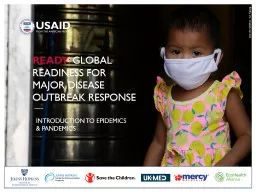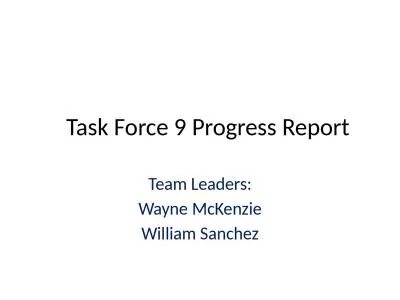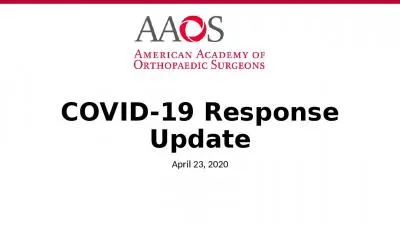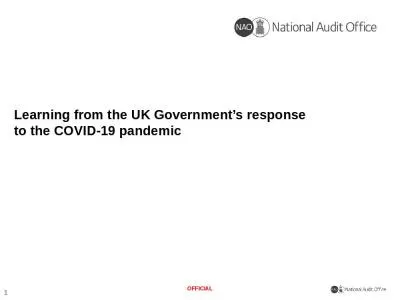PPT-COVID-19 Response: An Update from the At-Risk Task Force
Author : caitlin | Published Date : 2022-05-17
March 2020 Georgina Peacock MD MPH FAAP is the Division Director for the Division of Human Development and Disability DHDD at the National Center on Birth Defects
Presentation Embed Code
Download Presentation
Download Presentation The PPT/PDF document "COVID-19 Response: An Update from the A..." is the property of its rightful owner. Permission is granted to download and print the materials on this website for personal, non-commercial use only, and to display it on your personal computer provided you do not modify the materials and that you retain all copyright notices contained in the materials. By downloading content from our website, you accept the terms of this agreement.
COVID-19 Response: An Update from the At-Risk Task Force: Transcript
Download Rules Of Document
"COVID-19 Response: An Update from the At-Risk Task Force"The content belongs to its owner. You may download and print it for personal use, without modification, and keep all copyright notices. By downloading, you agree to these terms.
Related Documents

